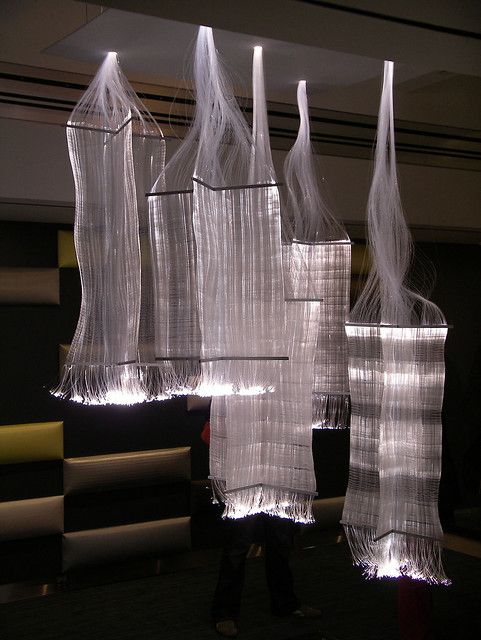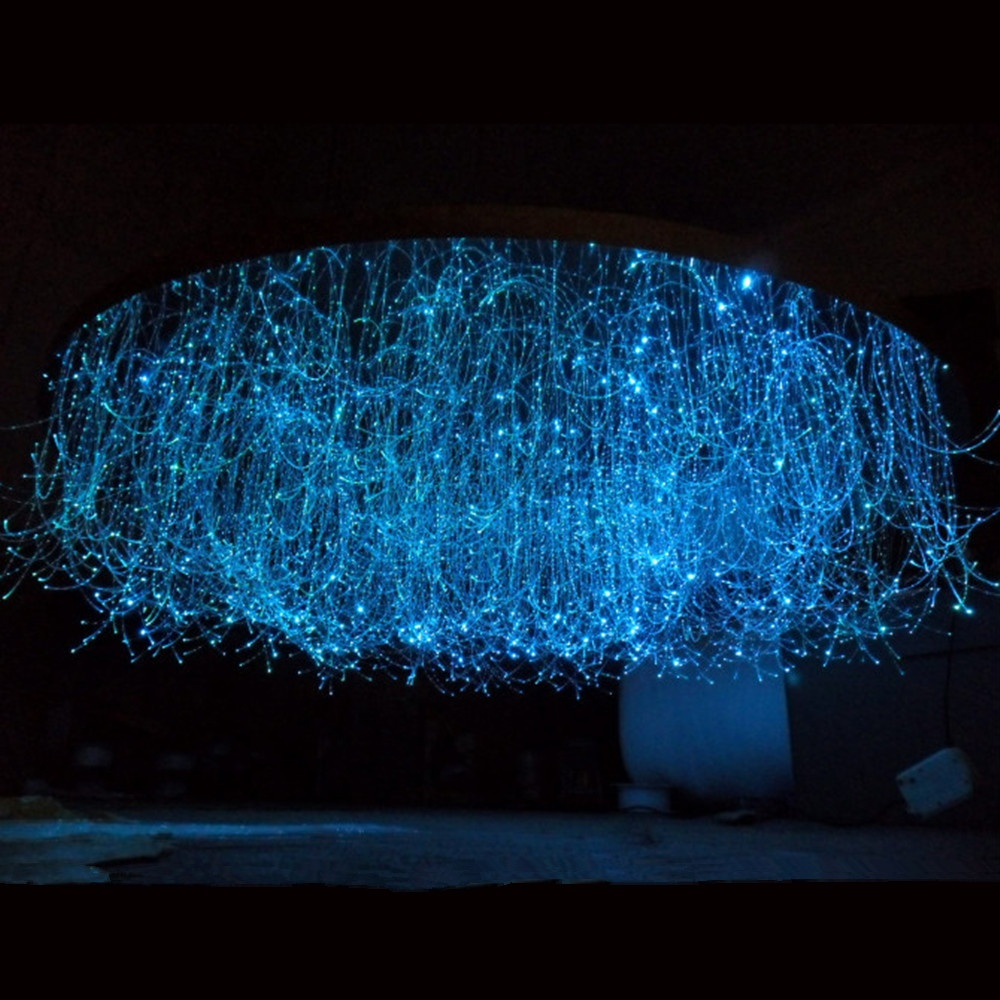
Fiber optic lighting is a type of lighting that uses thin strands of glass or plastic fibers to transmit light from a source to a desired location. These fibers are flexible and can be easily bent and routed around obstacles, making them ideal for use in a variety of applications such as decorative lighting, signage, and architectural lighting. The light source, typically an LED or halogen bulb, is placed at one end of the fiber optic cables, and the light is transmitted along the length of the cables through total internal reflection. This type of lighting system is energy-efficient, safe, and durable, with the ability to produce a wide range of colors and intensity levels. Fiber optic lighting is also low maintenance, with the cables themselves requiring little to no maintenance once installed. Additionally, fiber optic lighting is versatile and can be used in both indoor and outdoor settings, making it a popular choice for creative and innovative lighting design projects.
Fiber optic lighting is an innovative and versatile technology that is transforming the way lighting is used in various applications. Instead of using traditional light sources like incandescent or LED bulbs, fiber optic lighting relies on optical fibers to transmit light to different locations. This allows for more creative and customizable lighting solutions that can be used in a wide range of settings, from residential homes to commercial buildings and public spaces.
One of the key advantages of fiber optic lighting is its ability to be easily manipulated and controlled. Because the light source is separate from the actual lighting fixture, it is possible to create intricate and dynamic lighting effects that can change color, intensity, and direction. This makes fiber optic lighting ideal for architectural lighting, landscape lighting, and artistic installations where creative and dynamic lighting effects are desired.
Additionally, fiber optic lighting is also energy efficient and durable, making it a cost-effective choice for many lighting applications. Because the light source is typically located in a remote location away from the actual fixture, there is less heat generated and energy wasted compared to traditional lighting sources. This can result in lower energy bills and maintenance costs over time, making fiber optic lighting a sustainable and environmentally friendly lighting option. Overall, fiber optic lighting offers a unique combination of flexibility, creativity, and efficiency that is driving its popularity in various lighting applications.
 Decoration Ideas
Decoration Ideas







